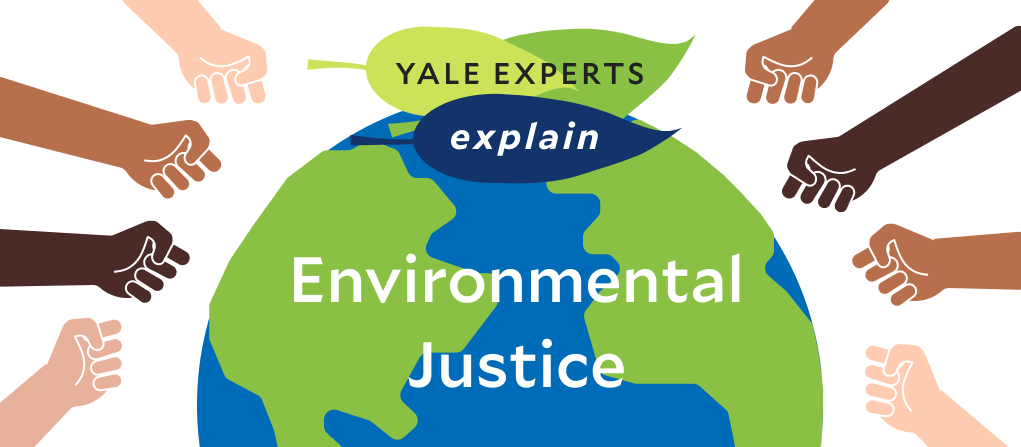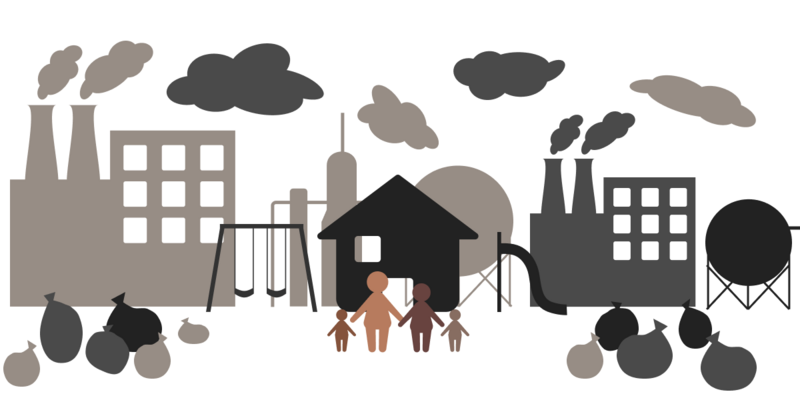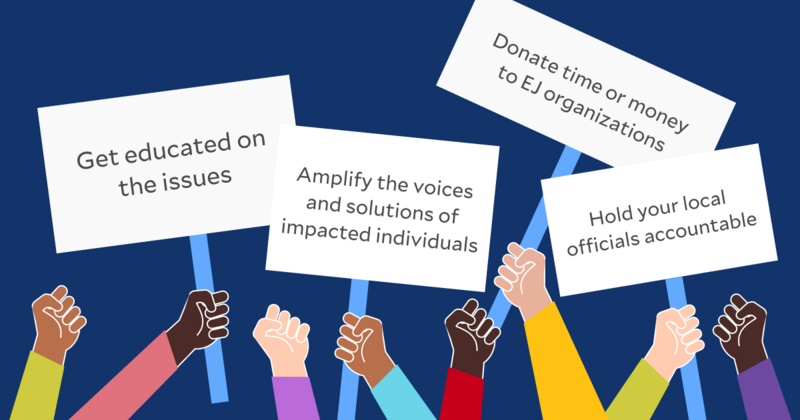
October 1, 2020
Environmental justice scholars Dr. Dorceta Taylor and Dr. Gerald Torres talk about the link between social justice and environmental health, and how we cannot move forward without addressing both.
What is environmental justice, and where did the concept come from?
“Environmental justice is really concerned with documenting and understanding the disproportionate and unequal environmental burdens that certain communities face,” Dr. Dorceta Taylor (’85 M.F.S., ’91 Ph.D.), Professor of Environmental Justice at the Yale School of the Environment, says. “In the United States and around the world, low-income, Black, Indigenous, Latinx, and Asian people tend to be living in spaces where environmental hazards, extreme natural and human-made disasters, and environmental degradation occur more rampantly.”
The disproportionate distribution of environmental hazards to “the poorest, brownest and blackest people” is no coincidence; as Taylor puts it, “that is by design.”
Gerald Torres, Professor of Environmental Justice at the Yale School of the Environment and the Yale Law School, explains that the term originated in the 1990s following the results of a study of the placement of federally mandated hazardous waste sites, which found that the bulk of the toxic areas were located in African American communities. Resulting claims of environmental racism, he says, launched environmental justice into the public eye.
“From the discovery of the link between the political decision-making, environmental burden and race, class and geography, emerged the concept and movement of environmental justice,” Torres said. “At the time, even advocates for environmental quality weren’t taking into account the way in which race and class have implications for the environmental burden that communities face,” Torres explained, adding that major environmental groups did not have representation of minority and low-income communities and many of the programs of these groups did not reflect the priorities of environmental justice communities. For this reason, an important component of environmental justice is identifying these gaps and redistributing the power back to the communities being affected by decisions.

“Environmental justice not only seeks to identify the maldistribution of hazards and deficits in terms of environmental benefits and outcomes from health and other social factors, it also helps communities organize around these issues, reduce the inequalities and seek positive legal and policy changes that address these inequalities and help to improve their life and health conditions,” Taylor says.
What are some of the causes and effects of environmental injustices?
Torres points out that environmental injustices often occur due to what he calls “process failure” in the political decision making of cities. In these cases, either communities are deliberately kept out of the environmental decision making process, or environmental justice concerns do not make it onto the agenda in the first place.
“One of the key drivers in this is racism,” Taylor says. “It’s individual racism, as we see in communities where Black men are shot down if they jog along the road, or in places like Central Park where random White women can weaponize whiteness and their race and call the police on Black people who are actually obeying the law. It’s also structural racism in the sense that there are historical patterns of public and private institutions that have vested in racist and discriminatory behaviors that have long term implications and impacts.”
Taylor gives the example of the discriminatory red-lining practices carried out by the Federal Housing Authority in the 1930s and 1940s, where many Black families were denied loans to purchase property except in areas that were dilapidated or highly contaminated with environmental hazards. “Historical racism creates these different spaces and forces people to live in them,” Taylor says, and these issues have carried on to modern day.
Taylor explains that research has shown that it is much cheaper for a corporation to dump or pollute in low-income communities or communities of color than it is to do the same in a white, middle-class community. Taylor adds that when it comes to zoning laws, many low-income communities and communities of color are zoned in a way that makes it easier for a polluting industry to set up shop.
In addition to the presence of hazardous sites, Torres identifies the inequities in the maintenance of public infrastructure and the “systematic underenforcement of environmental rules” such as the Safe Drinking Water Act in low-income communities and communities of color. This often keeps these residents from having access to clean, drinkable water. On a similar vein, Taylor points out that it is not just the environmental burdens that are unequally shared, but also the environmental amenities. “These very same low-income communities and communities or color are in a deficit from the positive benefits of the environment,” Taylor says. “They tend to have fewer trees, parks, open spaces, playgrounds, and less access to healthy, nutritious food.”
These environmental injustices contribute to significant health disparities in the communities that face them. Experiencing environmental burdens – like exposure to toxins – and a lack of environmental amenities – such as trees that improve air quality – makes marginalized communities more likely to acquire respiratory conditions as well as mental health and developmental issues. In many cases, environmental injustices make these communities more susceptible to illnesses like COVID-19.
How does climate change play into environmental justice?
“Like every other environmental problem, the impact of climate change does not equally fall on communities,” Torres says. “If you look globally or domestically, the communities who are located on the most marginal land – typically poor and of color – will be the ones who are affected most harshly and most immediately.”
Torres explains that these areas are more likely to be subject to sea level rise and flooding that will only become more prevalent with the increase in frequency and strength of storms. This poses a great risk to the safety of residents as well as the resilience of the infrastructure of these locations. Climate change will also disproportionately affect those living on farms, regardless of race, as weather unpredictability threatens the viability of crops, and by extension threatens the economic well-being of the farmers and their surrounding communities. “If you layer that on top of the pre-existing environmental injustices, it really just compounds the injury,” Torres adds.
As natural disasters and weather unpredictability are both expected to become more severe in coming years, institutional environmental racism will undoubtedly create disparities in disaster response. Torres recounted instances of insufficient distributions of recovery funding to poor, mostly Black communities during Hurricane Katrina in 2005 and Puerto Rican communities after Hurricane Maria in 2019.
“They’re all citizens of the United States, and yet care taken by the government in addressing these disasters was not equally available to them,” Torres said. “If you compare the makeup of the various communities that suffered personal or property damage through these disasters, you can come to your own conclusions.”
What are things that individuals can do to help advance environmental justice?
While the magnitude of the problem may be overwhelming, there are things that everyone can do to advance the principles of environmental justice. First, take time to learn about local and global environmental injustices, as well as the decisions, policies, and institutions perpetuating and combatting these issues. “Due in no small part to the Black Lives Matter movement, environmental justice is increasingly understood as part of systemic racism and systemic injustice,” Torres says. “However, getting ourselves educated is important so that phrases like ‘systemic racism’ and ‘systemic injustice’ actually have content and aren’t just slogans. Becoming conscious and aware of how the general injustices of our society are reflected in the environmental regimes that we create is a really good first step in taking action.”
Once you learn about the issues, Torres suggests becoming involved in your community and advocating for environmental decisions to be made fully transparent. “Environmental justice is the idea that when people in power are protecting or regulating the environment, they are obligated to take into account the effect on communities and correct for disparate impacts,” Torres says. “This can be anything from permitting and land use decisions, policy design and enforcement, to grant awards. It should be a requirement that environmental justice concerns get a spot on the agenda and are completely visible.”
Similarly, Taylor highlights the importance of looking at the stances of your elected officials and responding accordingly to “help hold them accountable for their environmental votes.” She also suggests investigating the environmental practices of corporations before you make a purchase and using the power of boycott necessary.

In addition to pressuring our leaders to take justice into account when designing products, systems, and policies, it is also important to elevate the voices and concerns of the communities impacted by environmental injustices. Taylor suggests volunteering your time, donating funds, or simply amplifying the work of environmental justice organizations and impacted community members through any platform you have – real or digital. “We can all be allies in the movement, even if we’re not actually suffering the same kinds of environmental burden,” Torres adds. “The way to help is to make sure that these issues don’t get lost.”
What is Yale Doing?
Yale’s Sustainability Plan aims to “foster a diverse and inclusive sustainability movement.” An Inclusion & Justice subcommittee of the Sustainability Implementation Steering Committee (SISC) was established in 2019. A team of interdisciplinary faculty and staff from multiple departments worked to pilot a process to highlight how gaps in modern environmental discussions affect decision making and recommend an approach for integrating diversity, equity, inclusion and justice into Yale’s sustainability efforts.
The group recently looked at Yale’s transportation infrastructure, exploring strategies to inform decisions based on background readings on space planning and racial justice, facilitated discussions, meeting with stakeholders not typically included in these conversations, and an intentional disrupting of the “environmental” question far beyond traditional sectors. Moving forward, the subcommittee plans to bring their reflections and learnings to other SISC groups to help them to consider using more inclusive decision-making processes.